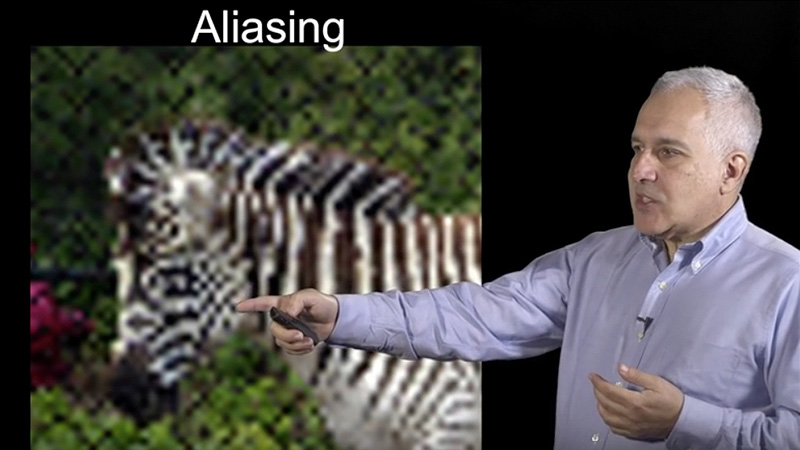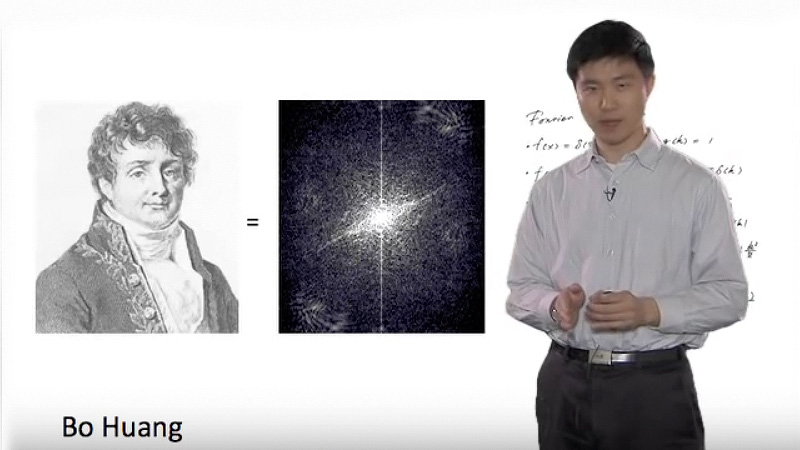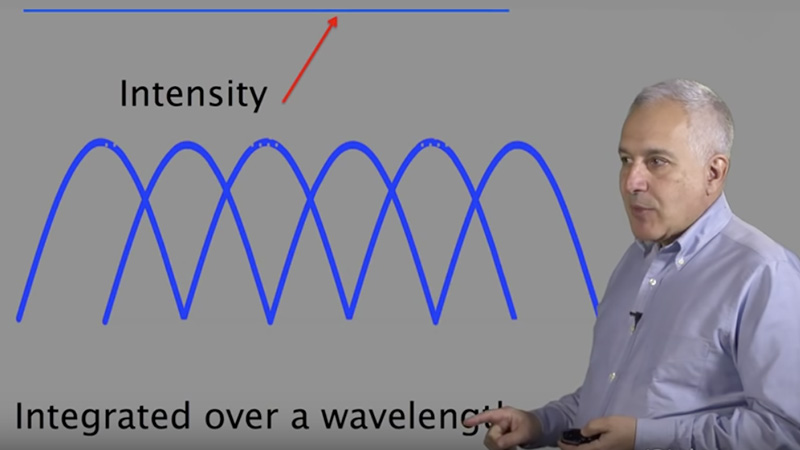Talk Overview
An infinitesimally small point appears in the microscope as a spot with a certain size, blurred in the z-direction and with concentric rings around it. This “point spread function” reveals many of the optical properties of your microscope. This lecture explains why and how the microscope images a point as a point spread function.
Questions
- In an infinity corrected microscope, the light of in-focus light of an on-axis object between the objective and the tube lens is:
- A plane wave parallel to the optical axis
- A plane wave traveling at an angle with respect to the optical axis
- A spherical wave parallel to the optical axis
- A spherical wave traveling at an angle with respect to the optical axis
- The half angle of light collection (α) for a 40x 1.2 na water immersion lens is:
- 72°
- 86°
- 67°
- 35°
- The highest resolution image will be obtained by using:
- High wavelength light and large numerical aperture lens
- Short wavelength light and large numerical aperture lens
- High wavelength light and low numerical aperture lens
- Short wavelength light and low numerical aperture lens
- The center bright area of the point spread function (psf) is called
- Huygens wavelet
- Airy disk
- Koehler’s ring
- Newton’s apple
- The distance between the bright center of the psf and the first dark ring in the xy plane equals:
- N x sin(α)
- 0.61 lambda / sin(α)
- 0.61 lambda / NA
- N / NA * lambda
- The distance between the bright center of the psf and the first dark ring in the z plane equals:
- 2 n lambda / NA2
- N2 / NA * lambda
- 0.61 lambda / NA2
- N NA2 / lambda
- Switching from a high to low na objective results in the following change in psf:
- Slightly larger central spot in xy plane, slightly larger cone in z plane
- Much larger central spot in xy plane, slight larger cone in z plane
- Slightly larger central spot in xy plane, much larger cone in z plane
- Much larger central spot in xy plane, much larger cone in z plane
Answers
View AnswersSpeaker Bio
Jeff Lichtman

Jeff Lichtman’s interest in how specific neuronal connections are made and maintained began while he was a MD-PhD student at Washington University in Saint Louis. Lichtman remained at Washington University for nearly 30 years. In 2004, he moved to Harvard University where he is Professor of Molecular and Cellular Biology and a member of the… Continue Reading









Mohammad Abdelwahab says
Thank you very much for this amazing lecture!
I am wondering if this numerical analysis and simulations for the wavelets interference are available in a published article or in a book.
I also think Q2 has a small mistake where calculated alpha is much closer to 67 than 72.
Sin (71.6) = 0.949 where 1.22/1.33 = 0.902 corresponding to alpha of 64.46
DNA says
The same result here. The provided answer is incorrect.